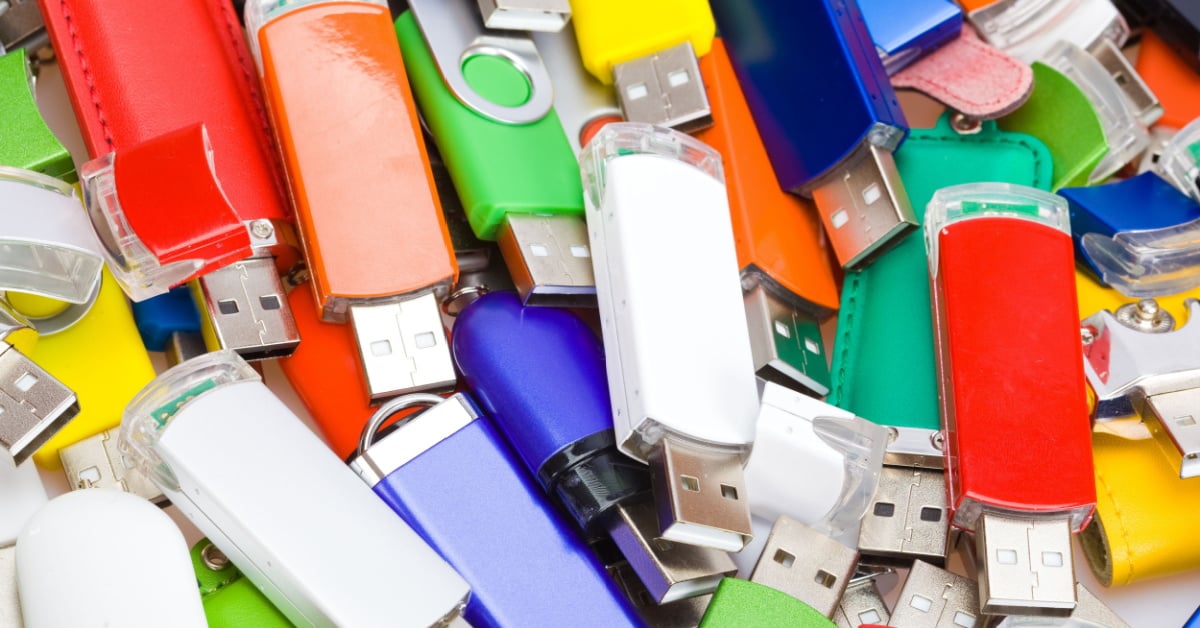You're Not Imagining Things – USB Memory Sticks Are Getting Worse

A German data recovery specialist has confirmed what many Reg readers will have suspected: USB memory sticks are getting less reliable. The cause, as you might have guessed, is inferior memory chips, while the move to storing multiple bits per flash cell also plays a part.
CBL Data Recovery posted that the quality of newer memory components in microSD and USB sticks is declining, and it reported that USB sticks where the NAND manufacturer's logo had been removed from the chip are increasingly turning up in its data recovery laboratory.
It suspects that flash chips from manufacturers such as SK hynix, Sandisk or Samsung that fail quality control checks are being resold into the market, but marked as components with lower memory capacities.
"When we opened defective USB sticks last year, we found an alarming number of inferior memory chips with reduced capacity and the manufacturer's logo removed from the chip," wrote CBL Managing Director Conrad Heinicke (translated from German).
Heinicke said that many of the USB sticks actually contained microSD cards that had been mounted onto the circuit board and were being managed by an external controller chip. While USB sticks like this were mostly promotional gifts, he said, there were also branded products among them, adding: "You shouldn't rely too much on the reliability of flash memory."
Heinicke's view is that the adoption of multi-level cell architectures, where a single memory cell is coaxed into storing more than just a single bit by varying the voltage, has also exacerbated the situation. With quad level cells (QLC), for example, four bits are stored per cell, which means that 16 states have to be distinguished.
This path was chosen by the NAND flash manufacturers because it delivers greater storage density, which means higher capacity drives and lower costs per GB. But it also has implications for the endurance, or longevity of the cells. In other words, the cells wear out faster the more bits they are used to store.
- Japan stumps up more cash for Kioxia and Western Digital to make memory chips
- China 'readies production' of homegrown high-bandwidth memory
- Seagate used bullying tactics to prevent union recognition, claims Unite
- Japanese government finally bids sayonara to the 3.5" floppy disk
"The downside of success in increasing storage density: writability (endurance) and storage capacity (retention) decrease," he wrote. "This means that the number of maximum possible write-read cycles decreases and the risk increases that the charge differences, which are read as bits, can no longer be read due to the aging of the insulation layer that holds these charges."
According to our sister site Blocks & Files, a single-level cell supports around 100,000 cycles while a (2-bit) MLC cell wears out after around 10,000 cycles, a triple-level cell is limited to 3,000 cycles and QLC supports about 1,200. Upcoming penta-level cells (5 bits per cell) are likely to have less than 600 cycles.
"Even with high-quality memory chips, the effort that manufacturers have to put into error correction mechanisms in the controller is enormous. It is not surprising that data loss occurs with USB sticks containing decommissioned chips," Heinicke states.
He posted a few tips for flash users. If you frequently write and delete data on USB sticks, such as when using them as backup devices, for example, you should use several sticks in rotation.
If flash media is to be used to store anything for an extended period, use high-quality storage hardware, and keep it somewhere cool, as high temperatures may accelerate data loss.
Flash storage should be accessed annually or semi-annually, as this allows the error correction mechanisms to internally copy "fading" data, and devices should not be filled to capacity – leaving unallocated space allows the internal data maintenance and error correction mechanisms to function longer. ®
From Chip War To Cloud War: The Next Frontier In Global Tech Competition
The global chip war, characterized by intense competition among nations and corporations for supremacy in semiconductor ... Read more
The High Stakes Of Tech Regulation: Security Risks And Market Dynamics
The influence of tech giants in the global economy continues to grow, raising crucial questions about how to balance sec... Read more
The Tyranny Of Instagram Interiors: Why It's Time To Break Free From Algorithm-Driven Aesthetics
Instagram has become a dominant force in shaping interior design trends, offering a seemingly endless stream of inspirat... Read more
The Data Crunch In AI: Strategies For Sustainability
Exploring solutions to the imminent exhaustion of internet data for AI training.As the artificial intelligence (AI) indu... Read more
Google Abandons Four-Year Effort To Remove Cookies From Chrome Browser
After four years of dedicated effort, Google has decided to abandon its plan to remove third-party cookies from its Chro... Read more
LinkedIn Embraces AI And Gamification To Drive User Engagement And Revenue
In an effort to tackle slowing revenue growth and enhance user engagement, LinkedIn is turning to artificial intelligenc... Read more

